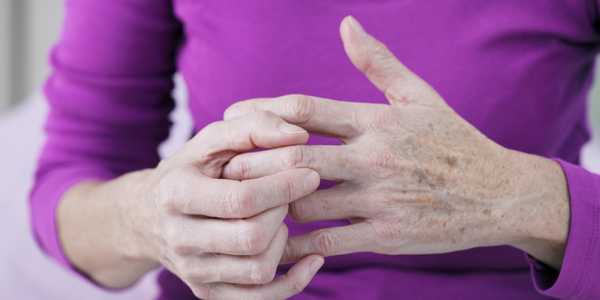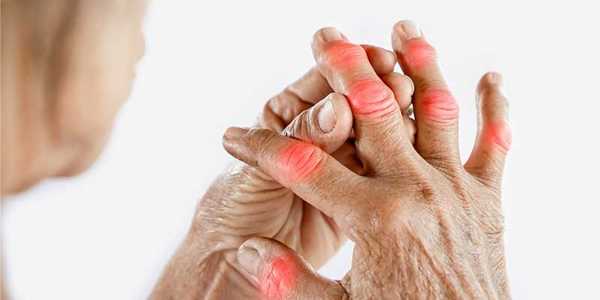Arthritis is a widespread condition impacting millions globally, leading to pain, stiffness, and reduced mobility, particularly in joints. Among its various forms, finger arthritis is a condition that can deeply influence one's daily actions and overall quality of life. It is essential to grasp the nuances of this ailment since symptoms tend to escalate gradually and are frequently mistaken for typical age-related changes. Early detection is paramount; acknowledging initial symptoms of finger arthritis—such as persistent joint pain and swelling—can facilitate timely medical intervention and better management.
Common Types of Arthritis

Arthritis is a broad term for the inflammation of joints, marked by discomfort, swelling, and rigidity. It comprises over 100 types, with osteoarthritis (OA) and rheumatoid arthritis (RA) being the most common. Osteoarthritis is primarily a degenerative joint disorder stemming from wear and tear on the joints, often affecting weight-bearing joints and leading to cartilage erosion. On the other hand, rheumatoid arthritis is an autoimmune ailment where the body's immune response erroneously attacks joint tissues, causing painful inflammation and possible deformities.
First Signs of Arthritis in Fingers
The emergence of arthritis can present in various forms, particularly in the fingers. Awareness of initial signs is crucial for timely management and treatment.
Swelling
Finger swelling is frequently one of the earliest visible signs of arthritis. This manifests as a soft, puffy area surrounding one or more joints and can appear to varying degrees. Potential reasons for swelling include inflammation spurred by the immune system attacking joint tissues or excess fluid buildup. If ignored, persistent swelling can damage the joint, leading to heightened pain and diminished mobility.
Pain
Finger arthritis pain can differ significantly among individuals. Some may deal with sharp, acute pain that complicates gripping objects, while others might only experience a dull, throbbing ache, particularly noticeable after periods of inactivity. It can also exhibit specific patterns; for instance, discomfort may intensify during activity or fluctuate with weather changes, hinting at underlying inflammation.
Stiffness
Morning stiffness is another critical warning indicator of finger arthritis. This tightness in the tissues surrounding the joints often arises from overnight inactivity, which can make movement challenging as the day advances. Identifying this symptom early can assist individuals in comprehending the need for morning stretches or exercises to mitigate discomfort throughout the day.
Decreased Range of Motion
With the progression of arthritis, individuals may recognize a reduction in their fingers' range of motion. Tasks like holding a pen, fastening shirts, or grasping small objects can become increasingly challenging. This limitation may stem from swelling, cartilage damage, or physical obstruction within joint movement, severely impacting daily routines.
Nodules
Individuals with arthritis may also develop Heberden's nodes or Bouchard's nodes. Heberden's nodules occur at the distal joints (closest to the fingertips), whereas Bouchard's nodules form at the proximal joints (middle of the fingers). These bony growths serve as significant indicators of arthritis, pointing towards degeneration in cartilage and joint space.
Recognizing these early manifestations of arthritis in the fingers allows for prompt consultations with healthcare providers, significantly enhancing management strategies and treatment effectiveness.
Risk Factors for Developing Arthritis
The onset of arthritis, especially finger arthritis, can be attributed to many risk factors. Age remains a primary determinant, with the likelihood of developing arthritis escalating. Genetics play a significant role, too; individuals with an ancestral background of arthritis often find themselves at higher risk. Additionally, sex is a notable determining element, as women are generally more susceptible than men, particularly post-menopause.
Previous injuries to the fingers, such as fractures or consistent strain due to tasks like typing or manual labor, can predispose one to arthritis. Lifestyle elements, particularly obesity, amplify these risks; excess weight exerts additional pressure on the joints, accelerating degeneration. Repetitive actions, whether through occupational tasks or sports, also contribute to joint deterioration, highlighting the importance of understanding these risk factors in combating the onset of arthritis.
Diagnosis of Arthritis

Diagnosing arthritis initiates with a thorough medical assessment, centering on patient history and a physical examination. During the history-gathering stage, healthcare providers will ask about symptoms, duration, family history of arthritis, and potential risk factors. The physical examination evaluates joint function, swelling, discomfort, and range of motion.
A suite of diagnostic tests reinforces this evaluation. X-rays can uncover joint damage or alterations typical of arthritis, while blood analyses may reveal markers of inflammation and autoimmune disorders, such as rheumatoid arthritis. Furthermore, magnetic resonance imaging (MRI) enables detailed soft tissue and cartilage visualization, offering critical insights into joint health. Together, these procedures aim to identify specific types of arthritis, evaluate the severity of the condition, and inform effective treatment plans.
Treatment Options
Effective arthritis management is crucial for slowing progression and maintaining a high quality of life. Treatment alternatives fluctuate, encompassing non-steroidal anti-inflammatory drugs (NSAIDs) and corticosteroids, which alleviate inflammation and pain. Physical therapy also proves beneficial, centering on exercises that bolster mobility and strength while educating patients on appropriate joint care. Lifestyle modifications, including low-impact exercises and adherence to an anti-inflammatory diet rich in omega-3 fatty acids, can greatly mitigate symptoms.
For example, engaging in early intervention can yield significant outcomes; one patient reported decreased pain after only a few weeks of following a customized regimen of exercises and dietary adjustments. Such success narratives highlight the need for proactive arthritis symptom management to avert further joint damage, leading to a more active and fulfilling life.
Enhancing Your Joint Health
Recognizing the initial symptoms of arthritis in the fingers is vital for effective management and the alleviation of discomfort. As discussed in this article, signs like joint pain, stiffness, and swelling should not be dismissed; they may indicate the onset of arthritis. Early action is essential and can lead to better treatment outcomes, potentially hindering disease progression while preserving hand function. If any warning signs arise, it is essential to consult medical professionals without delay. Your healthcare provider can deliver tailored guidance, diagnostic assessments, and treatment strategies best suited to your situation. Remember, addressing these symptoms early can greatly enhance your quality of life, enabling you to maintain optimal hand mobility and functionality well into the future.















